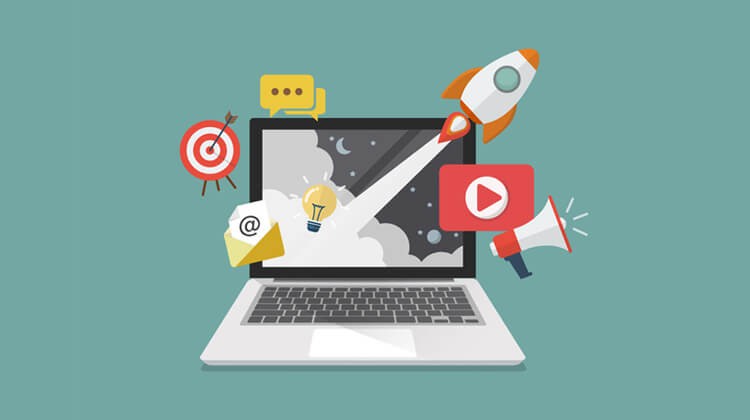How to Create an Email Marketing Campaign That Gets Results
by Aden Andrus • August 9, 2019
Creating an effective email marketing campaign can be a bit daunting. After all, there are about 269,000,000,000 emails sent every day (literally!). In the face of all those zeroes, it can be hard to find a way to stand out.
But, I’ve got a secret for you: most email marketing campaigns are designed to fail.
Unfortunately, when it comes to creating an email marketing campaign, most businesses have no real idea what they’re doing. They just send out a stream of emails and hope that something sticks. Or, they figure that email marketing doesn’t work and don’t email at all.
That’s good news for you, because putting together an effective email marketing campaign really isn’t all that difficult. You just have to know what you’re doing and put in the necessary time and effort. In this article, we’ll teach you what you need to know to create email marketing campaigns that will get you the attention, opens, clicks, leads and sales you need.
What is an Email Marketing Campaign?
An email marketing campaign is one or more emails that you send to a group (or list) of people. If you do it right, that email marketing campaign will get people to do something: think about your buiness, read a blog post, watch a video, buy a product, submit a lead form, etc.
Despite the fact that email marketing has been around since 1978, it remains one of the most economical ways to market your business. In fact, 90% of adults and 74% of teenagers still use email on a regular basis. That’s pretty impressive, considering how many technological innovations have appeared and fallen by the wayside over the past 40 years.
So, is email marketing dead? Not by a long shot.
Given how important email itself still is, email marketing could very well outlast many of our current marketing platforms like Google Ads or Facebook Ads. Like it’s predecessor, snail mail, email is a fundamentally valuable channel of communication, so learning how to market on that channel promises to deliver value for decades to come.
Getting Ready to Create an Email Marketing Campaign
Like any online marketing, an email marketing campaign is only as good as your prep work. If you don’t know who you’re targeting, how to reach them and what you’re trying to achieve, it’s almost impossible to create an effective email campaign.
Let’s take a look at each of these areas in turn:
Who Are You Targeting?
The first question you need to ask yourself before you create an email marketing campaign is, “Who am I targeting?” This question is important whether this is your first email marketing campaign or your one-thousandth campaign.
Why? Well, all good marketing starts with your target audience. The better you understand who you are targeting, their wants, interests, needs and goals, the easier it will be to create content that appeals to your audience.
For an email marketing campaign, that audience is fairly straightforward. Your target audience is all of the people on the email list that you’ll be marketing to. But, within that simplicity, there are a lot of potential factors to consider.
- How did people get on your email list? Did they sign up for your company newsletter? Fill out a lead form? Enter a contest? Buy your product or service?
- What sorts of content is your audience looking for? Tips and advice? Sales or discounts? Feel-good stories? Sales information?
- What types of people are you emailing? Mostly women? Men? Millenials? Teens? Moms with small children? Rich retirees? Poor college students?
- Why will your audience want to read your emails? Do they have a specific problem they want to solve? A desire to buy your stuff? Are they just curious? Or bored?
Since you should know how you got your email marketing list in the first place, you should hopefully have a pretty good sense for who your target audience is. If not, you need to do some research.
For example, if you’re trying to learn more about what types of people are signing up for your blog newsletter, you can easily get a lot of helpful demographics information from Google Analytics or Facebook Insights:
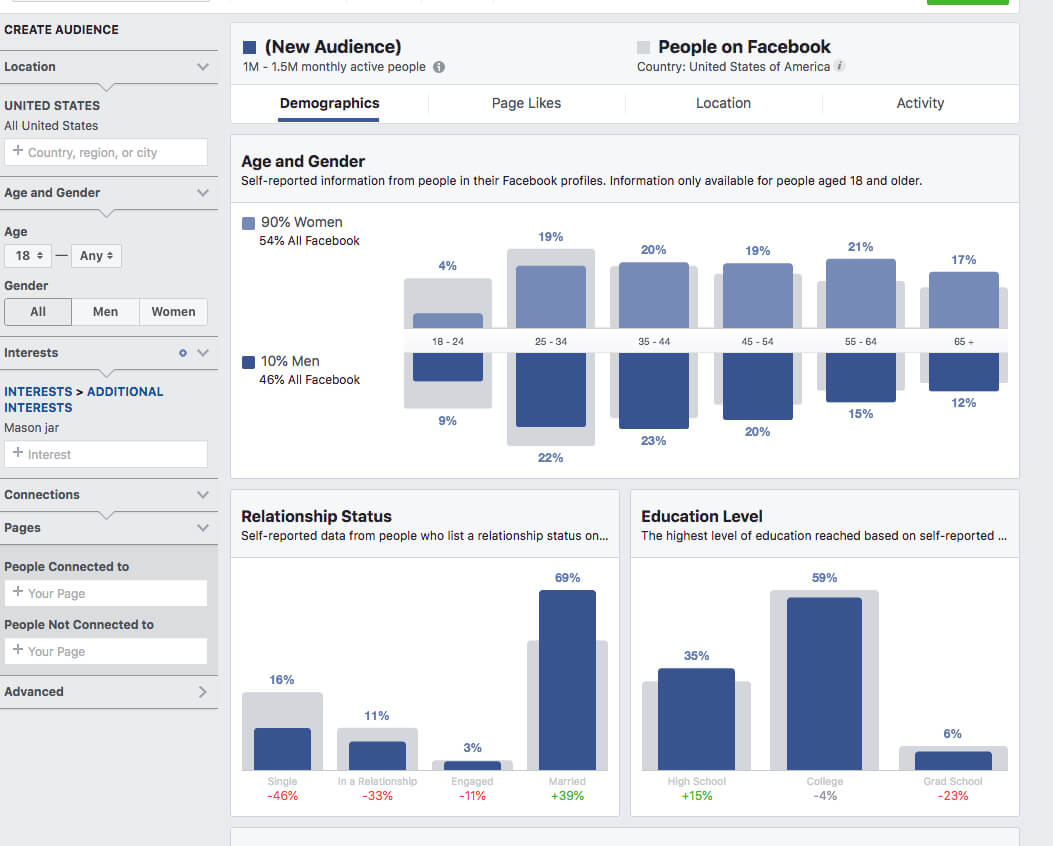
As you can see above, these platforms can tell you a ton about your target audience, which will help you get a better sense for what types of people you’re emailing…and what sort of email marketing campaign you should try.
How Are You Going to Going to Engage Your Audience?
Once you know who you’re emailing, you need to think about what you want say. Basically, there are three main types of email marketing campaigns: 1) promotional emails, 2) relational emails and 3) transactional emails.
Promotional emails are what everyone thinks of when they hear the words “email marketing campaign”. They’re emails that advertise a business, product or service, or some sort of offer or discount.
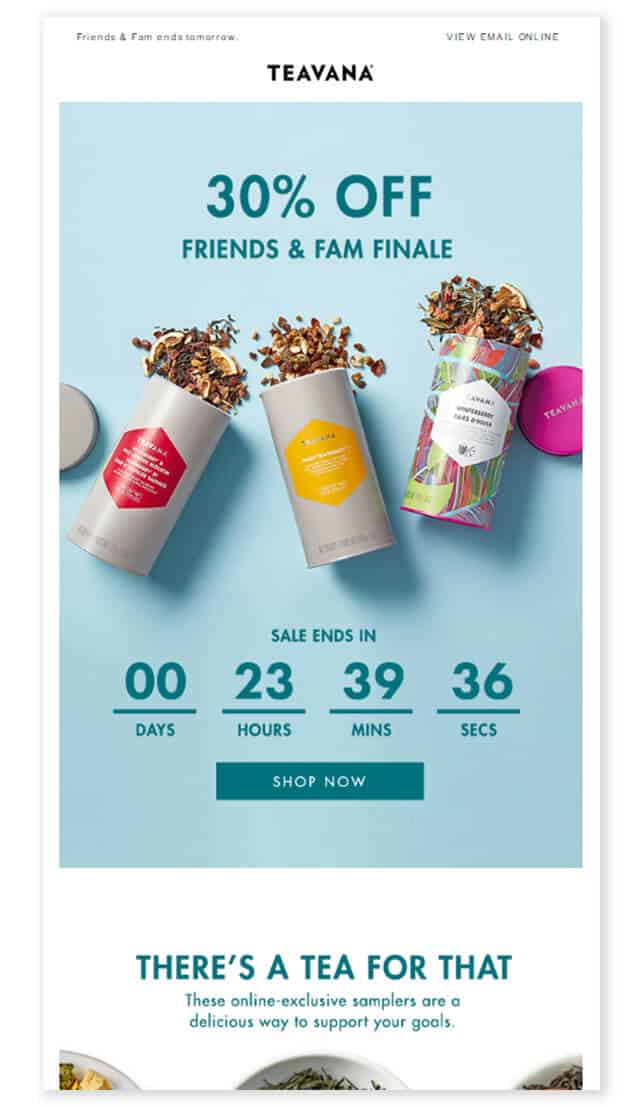
As you can probably guess, relational emails are all about building a relationship with your email subscribers. Rather than focusing on getting people to do something for you, relational emails are designed to provide value for your subscribers. That might be newsletter content, an eBook download, information about an upcoming webinar, etc.
Finally, transactional emails are emails that you send in response to an action that someone has taken. Here are a few examples:
- Order confirmations
- eBook download confirmations
- Welcome messages
- Subscriber confirmations
- Password change confirmations
These types of emails usually deal with the nuts-and-bolts of running your business. They’re not the most exciting emails in the world, but they help people feel comfortable and confident in your business.
Depending on what sort of email marketing campaign you’re trying to create, any of these types of emails may apply. In fact, you may use multiple types of emails within a string of marketing emails called an email drip campaign, but that’s a more involved discussion for another article.
What Are You Trying to Accomplish?
The final question you should ask yourself before creating an email marketing campaign is, “What am I trying to accomplish with this campaign?” If you don’t set the proper goals for an email marketing campaign, it’s almost impossible to measure your success and learn how to improve your results in the future.
Here are some common goals for email marketing campaigns:
- Improve attendance at an upcoming event
- Build a relationship of trust with customers or other subscribers by providing value
- Segment subscribers into more specific lists so that you can send them more targeted email content
- Drive traffic to a piece of content
- Increase brand awareness
- Re-engage inactive subscribers
- Get leads
- Generate more sales
Now, if you notice, at no point did we mention things like open rates or click rates. That’s because those are metrics, not goals. You can use metrics to measure how effective your emails were at achieving your goals, but your goal shouldn’t be a 10% click rate.
Getting opens or clicks is easy—just offer a free gift card to anyone who opens your email and clicks on your link. You’ll have amazing metrics…but they won’t really mean much to your business. Instead, your email marketing campaign should be focused on a goal that helps your business—and then you can measure your progress towards that goal with metrics.
Creating an Email Marketing Campaign
Once you know who you’re targeting, how you want to engage with people and what you’re trying to accomplish, it’s time to start working on your actual campaign. While there’s a lot to go over here, the overall process isn’t all that different from writing an email to a colleague—with a marketing twist.
Setting Up Your Emails
If you’re tempted to just send out an email blast directly from your email account, don’t. Just don’t. I’ve seen it in action before, and it isn’t pretty.
Not only do most email providers have a lot of rules and restrictions that make running an email marketing campaign from a standard email account difficult, but a standard email provider simply isn’t designed for email marketing. You don’t have a ton of design options and its easy to make costly mistakes (like accidentally sending out a group email with the emails of everyone on your list—I’ve seen that one firsthand).
Fortunately, there are a lot of great email marketing platforms out there that you can use to create an email marketing campaign. Mailchimp is one of the most well-known, but there are plenty of other options out there, too.
Ideally, you should look for a tool with the following features (at a minimum):
- An easy-to-use email builder (complete with templates, if possible)
- Options for segmenting your audience
- Great reporting
- Integrations with other software you’re already using
- Email scheduling options
- Import/Export capabilities
These features will be key to your email marketing success. But, most email marketing tools will have all of these options and many more, so it shouldn’t be too hard to find a provider you like at an acceptable price point.
Putting Your Emails Together
Once you’ve gotten set up with an email marketing platform and imported your email list, it’s time for the fun part: putting your email(s) together. Let’s take a look at each component of your email.
Subject Line
Your email subject line is the first thing people see when your email shows up in their inbox and it’s a deciding factor in whether or not people will actually open your email. Your subject line needs to grab people’s attention and make them want to see what the rest of your email has to say.
Fortunately, your subject line doesn’t have to be all that long to make a good first impression. According to Campaign Monitor, most subject lines are only 41-50 characters long:
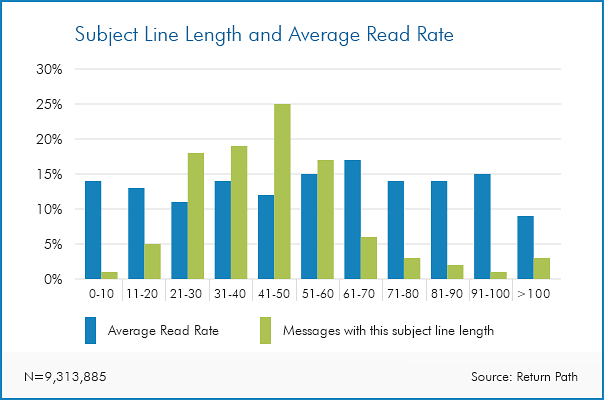
Since you don’t have a lot of words to use, you’ll want to get to the point quickly. This is especially true these days, because most people check their email on their phones, where email subject lines get cut off early if they’re too long.
Here are a few ways to make your subject line compelling:
- Tell them what the prize is. If your email contains a 50% off coupon, why beat around the bush? Tell people in your headline and get them excited to open your email.
- Use their name. Nothing grabs people’s attention more than seeing their name. So, if you can, try including their name in your subject line (note, this only works if you have a first name for every email in your list).
- Avoid spam trigger words. It’s kind of hard for people to read your subject line if your email is in their spam folder. Here’s a list of words you should avoid.
For more email subject line examples and ideas, check out this list of highly effective subject lines and see if there’s something you can adapt to meet your needs.
Email Marketing Copy
After your subject line, the actual copy of your email is the next most important part of your email. A lot of people like to focus on creating pretty emails, but as long as the design of your email doesn’t detract from your content, what you say will usually matter more than what your email looks like.
Since your target audience probably gets a constant stream of emails in their inbox, it pays to keep your email copy short, sweet and to the point. This is where all of that prep work pays off. Focus your email copy on things that your subscribers care about…and that support the overall goal of your email.
Here are some basic tips for creating email copy:
- Address subscribers by name. As mentioned earlier, using people’s names is a good way to get their attention. In addition, it helps make your emails feel more personalized and less like random spam.
- Keep your copy simple. People should be able to quickly scan your email and understand the point of it quickly. Even if it’s newsletter content, make sure the paragraphs are small and that the copy is digestible.
- Include a CTA. If you want people to do something after they open your email, you need to tell them so. Spell out what people should do by giving them a call-to-action (CTA).
- Use clickable buttons whenever possible. Having clickable CTA buttons in your emails will give you a huge edge. It immediately draws the eye and it makes it easy for users to click and get to where they want to go. It will absolutely increase your conversion rate.
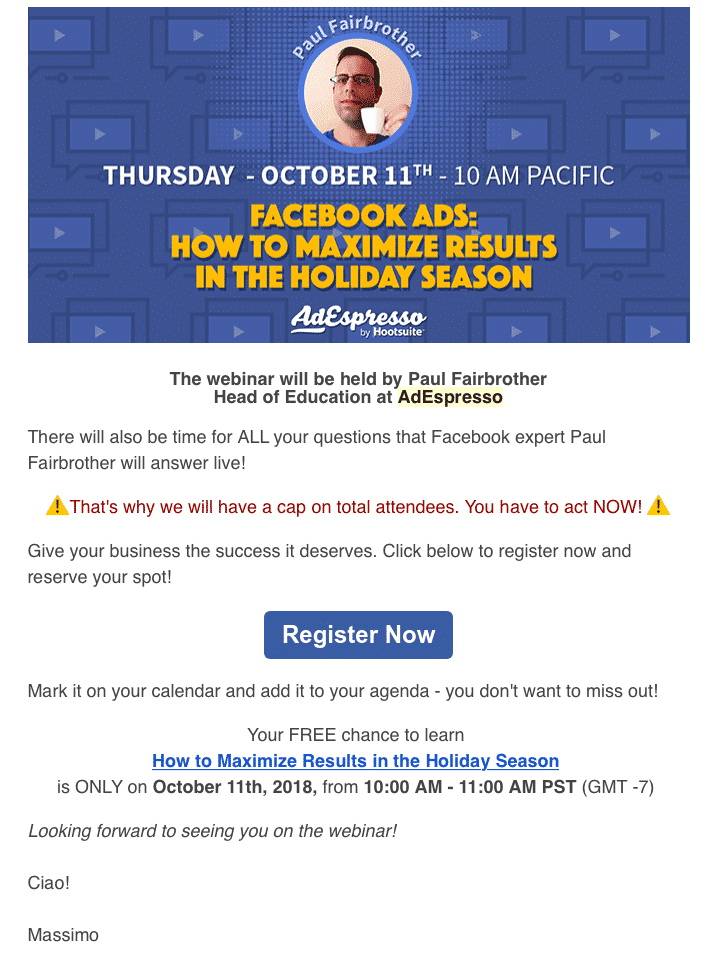
- Work aggressively to build your list. Market your email list. Mention it in your blog posts and on social media. Have an opt-in box when users are purchasing from you. Have a side-bar widget with an opt-in form and pop-ups that offer discounts in exchange for email subscriptions. Use any and all tactics that apply to your business.
- Open lines of communication. Explain to users how they can get in touch with you if you need something. This is particularly important in order emails or introductory emails.
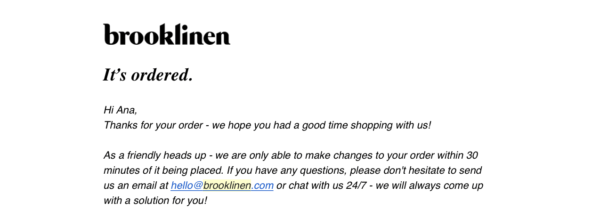
- Offer value. Your email content should be valuable to your target audience. That’s what will keep them opening those emails. Do you offer great content about how to care for the product? Great! Are you sending them discounts to save them money, or industry news you know they’ll love? Also excellent. Just keep your audience in mind here.
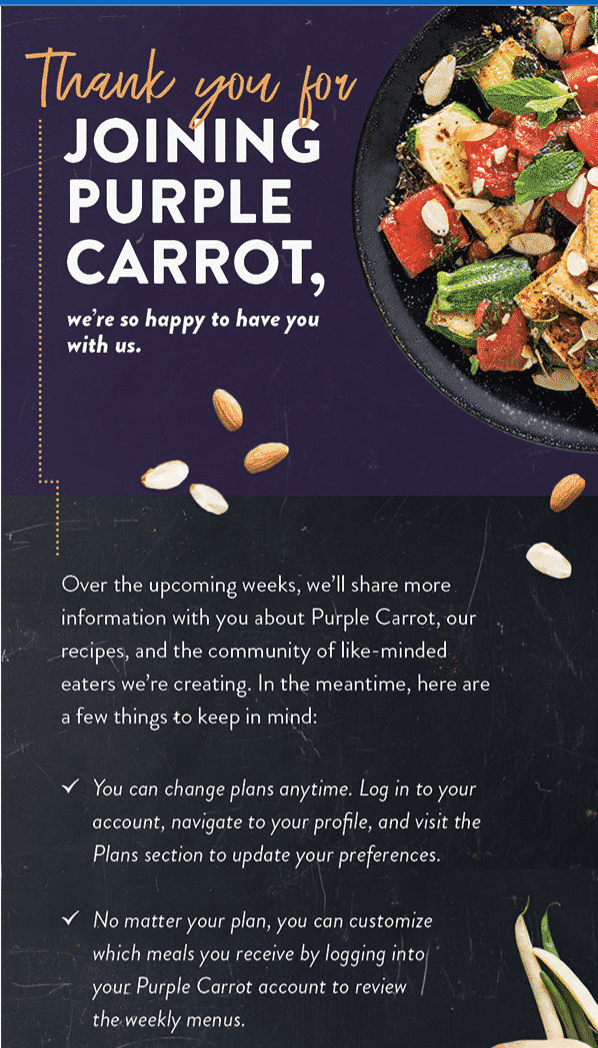
Keep in mind that you don’t have to include every one of these ideas in every email. Remember, you want to keep your emails short and simple. If you add too much content, people will get confused or distracted and be less likely to do what you want them to.
Email Design
While the actual design of your email isn’t quite as important as your subject line and copy, if your email looks so bad that it distracts people from your content, that’s a problem. In addition, since people will probably read your email on their phones, your email design also needs to be mobile-friendly.
Fortunately, most email marketing platforms offer a wide range of email templates that you can use to create attractive, user-friendly emails. As you can see from the sample emails above, there are a lot of valid ways to design your email. So, as long as you don’t sacrifice readability, you can feel free to take almost any approach.
Personally, I’ve tried everything from basic text emails that look like something a colleague would actually send you to highly-stylized, professionally-designed emails. They can all work, it’s just a question of matching what your audience is looking for and making sure that you don’t lose your copy inside your design.
Incidentally, if you do decide to use images in your emails, keep in mind that people may not be able to see them. Your email should still work even without your images and if the images are important to the overall message, consider using alt tags to describe them. That way, even if people are reading your email with images disabled, they’ll still make sense.
Scheduling Your Email Marketing Campaign
Once you’ve actually created your email marketing campaign, you need to figure out how and when you want to send it. For simple campaigns, like a newsletter, you might just want to send it immediately. But, for most campaigns, you’ll want to be a bit more strategic.
The goal here is to make your emails timely, relevant, interesting and valuable.
For example, promotional emails should be timed out with their respective promotions. Relational emails work best when they are sent during periods where people have time to actually read and digest them. Transactional emails should be sent immediately, not 2 weeks after someone buys an item or signs up for your newsletter.
Timing gets even more important when you are sending multiple emails as part of an email drip. For example, here is a series of email subject lines from emails that Asana sends after a new customer signs up to use their software:
- Welcome to Asana
- What do you need to get done this week?
- Plan your day with Asana
- Hit your next deadline
Each of these emails is timed out to help new users become more familiar and effective with the platform. Rather than dumping all of their information on users during the first day, they schedule out their content to help nurture people through the process.
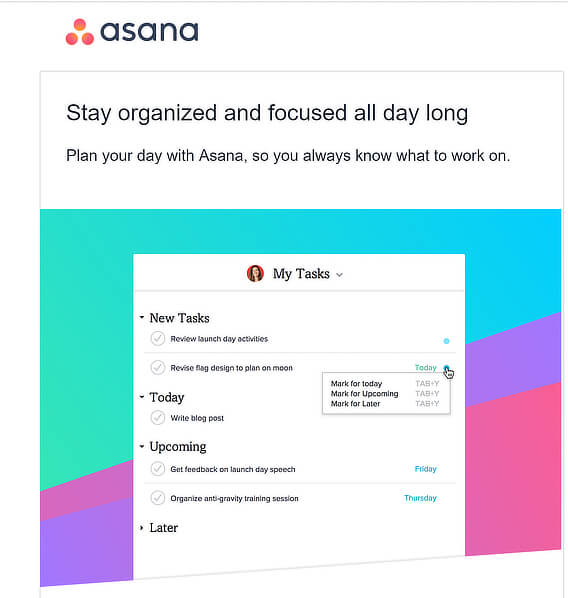
The trick here is to balance frequency with value and interest. If people feel like you are emailing them too frequently, you’ll push them into unsubscribing—or worse, marking your emails as spam. But, if your emails are meeting their expectations and providing them with value, they’ll look forward to your next email.
Conclusion
And that’s it! While it might seem intimidating at first, creating an effective email marketing campaign really isn’t that difficult. To be honest, the reason why so many businesses struggle with email marketing is simply because they don’t take the time to figure out their audience and learn how to communicate with them effectively.
But, if you follow the recommendations in this article, you’ll be well on your way to email marketing success. For more tips and help, feel free to check back here for additional content. We have plenty of other articles that will help you pick the right email marketing tools, create compelling email drips and much, much more.
Oh, and by the way, if you’d like some help putting your email marketing campaigns together, let us know here or in the comments. We’d love to help.
What do you think of email marketing? Have you tried it? What sorts of results did you get? Any advice you’d like to add? Leave your thoughts in the comments below.

